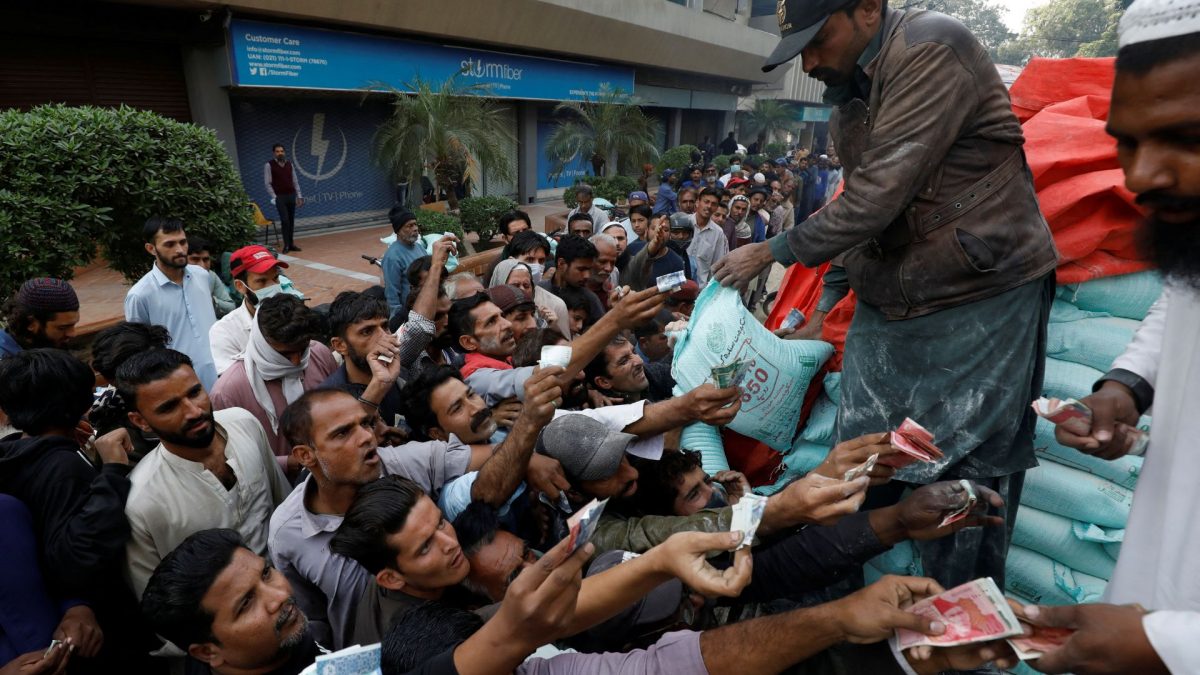Cash-strapped Pakistan has again turned towards China pleading for an additional 10 billion yuan ($1.4 billion) loan after it exhausted the 30 billion yuan ($4.3 billion) already taken from the world’s second largest economy which is itself struggling to retain its spot as it continues to face acute economic slowdown.
Pakistan wants more money from China to run the country
The request on behalf of Islamabad was made by finance minister Muhammad Aurangzeb who, on Saturday, met with China’s vice minister of finance Liao Min on the sidelines of IMF and the World Bank meetings in Washington, and urged to raise the limits under its currency swap agreement to 40 billion yuan.
Has China entertained Pakistan’s request?
Though China and Pakistan are allies, Beijing has not yet accepted the latest demand from Islamabad.
However, if China decides to help its friend again in its time of need, the total facility will reach about $5.7 billion.
It is also interesting to state that this isn’t the first time Pakistan has sought China for an increased debt limit, but Beijing has been persistent so far in declining all requests.
The demand from Pakistan comes less than a fortnight after China extended the current $4.3 billion (30 billion yuan) facility for another three years, pushing Islamabad’s debt repayment deadline to 2027.
Pakistan’s problem with Chinese money
Pakistan has been often leaning on China for assistance to keep its economy intact. Last year in July, when Islamabad’s foreign exchange reserves were depleting at a massive pace, it asked Beijing to delay extending the maturity of debt for nine power plants built by Chinese companies under the multibillion-dollar Pakistan China Economic Corridor (CPEC).
Impact Shorts
More ShortsPakistan Prime Minister Shehbaz Sharif also reportedly wrote a letter to the Chinese government where he requested debt reprofiling.
Islamabad, for long, has also been facing difficulty in renegotiating the expensive agreements with power producers, primarily Chinese companies, to bring down electricity prices.
The CPEC was signed in 2015 and Beijing pumped in billions of dollars into developing infrastructure in Pakistan.
CPEC has also earmarked billions of dollars in energy infrastructure development in Pakistan.
However, a report by DW quoted an expert on Chinese investment in Pakistan, Azeem Khalid, as saying that the China-funded power plant development has exacerbated Pakistan’s economic difficulties.
Khalid emphasised that rather than establishing government-owned power plants, Pakistan allowed Chinese companies to operate as Independent Power Producers (IPP), leading to capacity payments regardless of production.
“This essentially leads to the population paying for power they aren’t using,” he said.
Islamabad has taken loans from China which is higher than any other country in the world. But the interest rates on Chinese loans are not concessional and hover around 3.7 per cent.
The report quoted an Islamabad based economist, Safiya Aftab, as saying that these loans “are challenging to repay due to exorbitantly high interest rates, which exceed the payment capacity of the government."
China’s own economic woes
Pakistan has reached out to its friend at the time of its need, but China itself has been battling economic crisis and announcing slew of measures to support growth.
The Xi Jingping-led government is concerned as China’s economic growth remains below the 5 per cent target despite announcing a number of measures aimed at supporting growth.
In the third quarter (July-September), China’s economy expanded at an annual rate of 4.6 per cent.
China’s economy has remained sluggish despite the country lifting Covid-19 restrictions at the end of 2022. Consumer confidence is low and the real estate market continues to be a drag on the economy.
In the first three quarters of 2024, China’s growth rate was 4.8 per cent. On a quarterly basis, the economy expanded 0.9 per cent in the quarter that ended in September, up from 0.7 per cent growth in the previous quarter.
China’s factory output, in the first three quarters of the year, rose 5.8 per cent, while retail sales expanded 3.3 per cent compared to the same period last year. However, property investment sank 10.1 per cent and the value of new home sales plunged 22.7 per cent, underscoring weakness in the housing sector.
China’s September exports also slowed sharply, rising just 2.4 per cent in dollar terms from a year earlier, down from 8.7 per cent year-on-year growth in August. Imports were also weak, growing just 0.3 per cent and missing estimates.
With inputs from agencies.
)